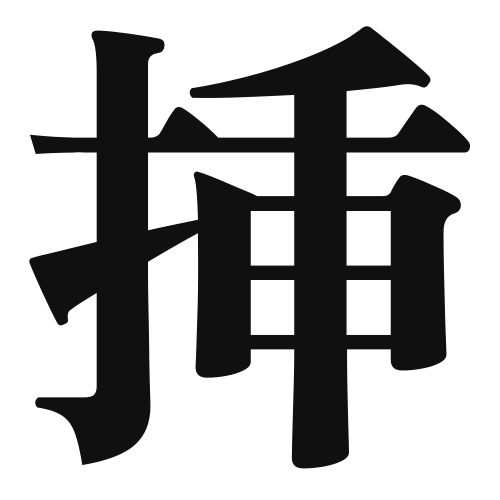1. Overview of Meaning
The kanji “挿” (sō) means “to insert” or “to put in.” It is often used in contexts where something is being placed or added into another object or space.
2. Formation and Radical
Formation of the Kanji: The kanji “挿” is a compound character (会意文字) that combines the elements of “手” (hand) and “插” (to insert). This reflects the action of using a hand to insert something.
Radical: The radical for “挿” is “手” (shū), which relates to actions performed by the hand.
3. Examples of Usage
Common Words and Phrases: Some frequently used words that include “挿” are:
- 挿入 (sōnyū) – insertion
- 挿絵 (sōe) – illustration
Example Sentences in Daily Conversation:
- この文書に図を挿入してください。 (Kono bunsho ni zu o sōnyū shite kudasai.) – Please insert a diagram into this document.
- 彼は本に挿絵を描いた。 (Kare wa hon ni soe o kaita.) – He drew illustrations in the book.
4. Synonyms and Antonyms
Similar Kanji: A similar kanji is “挿入” (sōnyū), which also means “insertion” but is more specific to the act of inserting something into a document or system.
Antonyms: An antonym for “挿” could be “抜” (batsu), which means “to remove” or “to pull out,” indicating the opposite action of inserting.
5. Cultural and Historical Background
Relation to Japanese Culture: The concept of “inserting” is significant in various aspects of Japanese culture, such as in art, where illustrations are often inserted into texts to enhance understanding.
Proverbs and Idioms: There are no widely known proverbs specifically using “挿,” but the act of inserting or adding can be metaphorically related to the idea of contributing or enhancing something in life.
